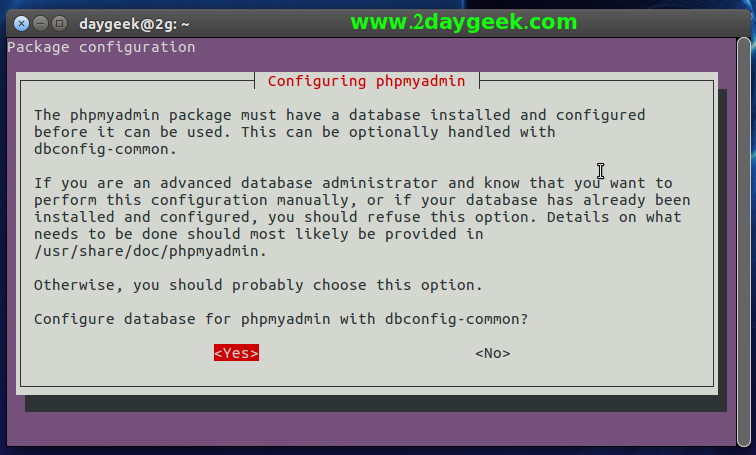

- #Phpmyadmin alternative ubuntu how to
- #Phpmyadmin alternative ubuntu install
- #Phpmyadmin alternative ubuntu update
- #Phpmyadmin alternative ubuntu password
You can use the root user or the user you just created to log in. Now, you can access the phpMyAdmin dashboard from a web browser. CREATE USER IDENTIFIED WITH caching_sha2_password BY 'password' GRANT ALL PRIVILEGES ON *.* TO WITH GRANT OPTION FLUSH PRIVILEGES EXIT Accessing phpMyAdmin
#Phpmyadmin alternative ubuntu password
Don’t forget to replace the username and password values with your own before executing the commands. Use the following statements to create the user and grant them the necessary permissions. To do this, first log in to MySQL as root. While you can grant this user the necessary permissions, we recommend creating a new user rather than using the default user. The default phpMyAdmin user only has limited permissions. sudo phpenmod mbstring sudo systemctl restart apache2 Creating New phpMyAdmin User
#Phpmyadmin alternative ubuntu install
sudo mysql -u root -p INSTALL COMPONENT "file://component_validate_password" exitįinally, enable the mbstring PHP module and restart the Apache server to apply the changes. sudo apt install -y phpmyadminĪfter installing phpMyAdmin, you can log in as the root user and re-enable the Validate Password plugin. Then, follow the same process as earlier to install phpMyAdmin. UNINSTALL COMPONENT "file://component_validate_password" exit Temporarily disable the Validate Password component and exit the MySQL prompt. Press Tab and Enter to proceed to the next screen and select the abort option there. Let’s go over how you can bypass this error. It’s standard procedure to enable the Validate Password option when securing MySQL, but you’ll encounter an error when setting the password due to this plugin. Then, select Yes when prompted to configure the database for phpMyAdmin with dbconfig-common.įinally, set a password for the phpMyAdmin MySQL user. Press Space to select apache2, then Tab and Enter to proceed.

When prompted to configure the web server, apache2 will be highlighted. sudo apt install phpmyadmin php-mbstring php-zip php-gd php-json php-curl Note: If you installed a PHP version different from the one currently in the repository, you’ll need to adjust the module versions accordingly in the command below (e.g.,php8.2-zip instead of php-zip). These will add extra functionality like adding JSON support, providing the curl module, etc. Now, install phpMyAdmin along with some other packages recommended in the official install docs.
#Phpmyadmin alternative ubuntu update
While there are multiple ways to install phpMyAdmin, we recommend installing it directly from the Ubuntu repository for the best integration.įirst, update your package index so that you have access to the latest packages. Additionally, as it’s a common attack vector, it’s important to properly secure it after the installation. You must set up a LAMP/LEMP stack on your server before installing phpMyAdmin. It can be a convenient alternative for users that don’t like administering MySQL from the command line. Here you can define the root directory (to put WordPress files there), your site domain name, as well as other settings.PhpMyAdmin is a PHP-based web interface for managing MySQL databases. To modify the default site example: sudo vi /etc/nginx/sites-available/default The nginx configuration files are available in /etc/nginx/nf, read this configuration example. Run command below to install php5-fpm: sudo apt-get install php5-fpm We can make PHP5 work in nginx through PHP-FPM, which is an alternative PHP FastCGI implementation with some additional features useful for sites of any size, especially busier sites. PHP is a reflective programming language, which makes it possible for all these different parts to work together. Once installed, start the web service via: sudo service nginx startĪnd check out if it is working by going to nginx is working ubuntu 14.04 If you want, install the latest stable Nginx 1.4.7 from PPA: sudo apt-get install python-software-properties To install it, run: sudo apt-get install nginx Nginx 1.4.6 is available in Ubuntu repositories. While the installing process, you’ll be asked to type a password for MySQL root user. To install Mysql 5.6.16, run: sudo apt-get install mysql-server-5.6 mysql-client-5.6 To install Mysql 5.5.36, run command: sudo apt-get install mysql-server mysql-client MySQL is a database management system which stores and organizes references to the information the webserver needs. To get started, log in your Ubuntu Server and follow the steps below: So it’s a good alternative to Apache webserver for building websites on low memory hosts.

The nginx project started with a strong focus on high concurrency, high performance and low memory usage. LEMP stands for Linux, Nginx (pronounced “engine x”), MySQL and PHP.
#Phpmyadmin alternative ubuntu how to
Want to build a website on your Ubuntu Server? Well, LEMP may be a good choice and here’s how to install and set it up.


 0 kommentar(er)
0 kommentar(er)
